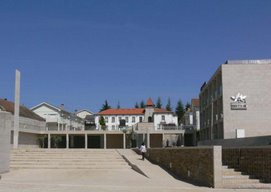 O Douro conquistou o sétimo lugar de um total de 133 destinos turísticos sustentáveis da National Geographic Society, ficando à frente de regiões como a Toscana (Itália) ou o centro histórico de Salzburg. O chefe da Estrutura de Missão do Douro, Ricardo Magalhães, afirmou que «este é um reconhecimento excepcional que confirma o sentido do trabalho que tem sido realizado para converter o Douro num destino turístico de excelência, com elevados critérios de sustentabilidade e qualidade». Depois da classificação como Património Mundial da Humanidade em 2001, a mais antiga região demarcada do mundo - o Douro - participou no concurso das «7 Maravilhas da Natureza», ficando entre os 77 melhores, e foi agora destacada pela National Geographic. A National Geographic Society divulgou uma nova lista de destinos turísticos sustentáveis, para a qual contribuíram 400 peritos de diferentes áreas, que coloca o Douro no 7.º lugar desse ranking, entre 133 destinos turísticos em todo o mundo, reconhecendo o valor da região vinhateira nas atracções históricas e naturais. Segundo um comunicado da Comissão de Coordeação e Desenvovlimento Regional do Norte (CCDRN), pela primeira vez, o Douro surge à frente de outros destinos de excelência como a região da Toscana, em Itália, ou o centro histórico de Salzburg, na Áustria.
O Douro conquistou o sétimo lugar de um total de 133 destinos turísticos sustentáveis da National Geographic Society, ficando à frente de regiões como a Toscana (Itália) ou o centro histórico de Salzburg. O chefe da Estrutura de Missão do Douro, Ricardo Magalhães, afirmou que «este é um reconhecimento excepcional que confirma o sentido do trabalho que tem sido realizado para converter o Douro num destino turístico de excelência, com elevados critérios de sustentabilidade e qualidade». Depois da classificação como Património Mundial da Humanidade em 2001, a mais antiga região demarcada do mundo - o Douro - participou no concurso das «7 Maravilhas da Natureza», ficando entre os 77 melhores, e foi agora destacada pela National Geographic. A National Geographic Society divulgou uma nova lista de destinos turísticos sustentáveis, para a qual contribuíram 400 peritos de diferentes áreas, que coloca o Douro no 7.º lugar desse ranking, entre 133 destinos turísticos em todo o mundo, reconhecendo o valor da região vinhateira nas atracções históricas e naturais. Segundo um comunicado da Comissão de Coordeação e Desenvovlimento Regional do Norte (CCDRN), pela primeira vez, o Douro surge à frente de outros destinos de excelência como a região da Toscana, em Itália, ou o centro histórico de Salzburg, na Áustria. O Algarve surge na lista mas foi incluído pelos especialistas nos destinos turísticos com susceptibilidades. A avaliação foi feita com base em seis critérios, designadamente a qualidade ambiental e ecológica, a integração social e cultural, o estado de conservação de edifícios históricos e sítios arqueológicos, o apelo estético, a qualidade da gestão turística e perspectivas para o futuro. Para esta classificação contribuiu, de acordo com a CCDRN, o «potencial de desenvolvimento do turismo rural, a promoção de vinho e da gastronomia, a recuperação de linhas de caminho-de-ferro e da criação de ciclovias».
A CCDRN, através da Estrutura de Missão de Douro, está a desenvolver contactos com a National Geographic Society no sentido de firmar um protocolo que garanta a adesão do Douro ao Centro de Destinos Turísticos Sustentáveis, assim como a promoção da região vinhateira nos canais promocionais da National Geographic. A National Geographic Society foi fundada em 1888, nos Estados Unidos da América, por 33 homens interessados em «organizar uma sociedade para o incremento e a difusão do conhecimento geográfico». Lusa

This wine region in northern Portugal charms some with its "historic and natural attractions" and disappoints others with its "suburbanization." Most agree about the region's intact cultural authenticity.
Here is a representative sampling of additional anonymous comments from the panelists. They are not necessarily the views of the National Geographic Society:
"Iconic region for Portuguese wine production. There still are opportunities for development and promotion in the areas of rural tourism, usage of old railways, hiking and biking trails, wine and gastronomy promotion, and domestic tourism."
"One of the world's great undiscovered landscapes. Relatively little tourism and almost no mass-market tourism. Rich in historic and natural attractions that retain an appeal and authenticity. One complaint: In Porto, a giant outdoor advertisement completely covered the largest historic building in the city. It was almost impossible to take a photo of Porto from across the river without including this giant eyesore."
"Biggest environmental problem is the chemical runoff from the vineyards. This may not be visible to the naked eye, but it is of great concern because the Douro River is slowly dying. A destination well suited to boat and 'pedestrian' tourism."
National GeographicHere is a representative sampling of additional anonymous comments from the panelists. They are not necessarily the views of the National Geographic Society:
"Iconic region for Portuguese wine production. There still are opportunities for development and promotion in the areas of rural tourism, usage of old railways, hiking and biking trails, wine and gastronomy promotion, and domestic tourism."
"One of the world's great undiscovered landscapes. Relatively little tourism and almost no mass-market tourism. Rich in historic and natural attractions that retain an appeal and authenticity. One complaint: In Porto, a giant outdoor advertisement completely covered the largest historic building in the city. It was almost impossible to take a photo of Porto from across the river without including this giant eyesore."
"Biggest environmental problem is the chemical runoff from the vineyards. This may not be visible to the naked eye, but it is of great concern because the Douro River is slowly dying. A destination well suited to boat and 'pedestrian' tourism."






Sem comentários:
Enviar um comentário